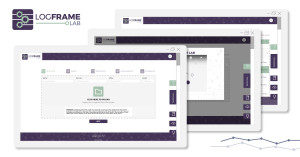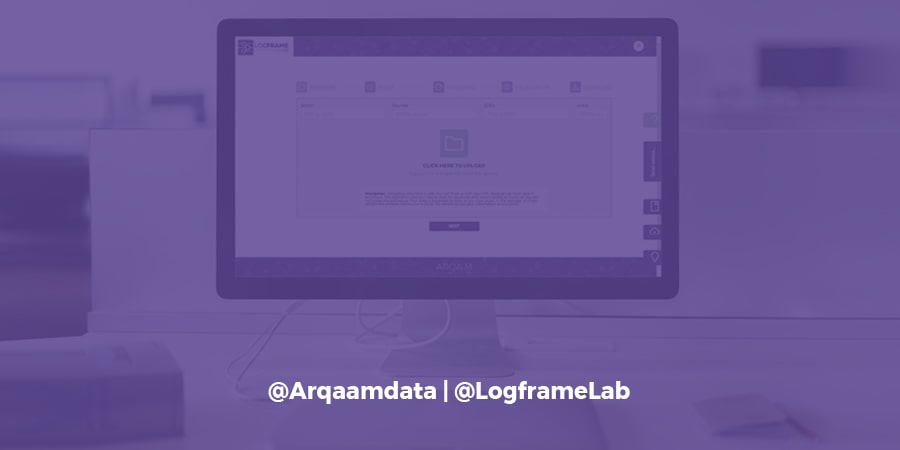“Using our knowledge of machine learning, we wanted to create a tool to help development actors execute the complex, necessary and often time-consuming tasks of selecting appropriate indicators and managing logframes.”
Selecting indicators and managing logframes can be complex tasks.
This is especially true for small and grassroots organisations. Not only is it often harder to obtain adequate funding for M&E, but smaller organisations may not always have sufficient capacity to perform M&E-related tasks.
Here at Arqaam, we’re passionate about supporting local and grassroots development and humanitarian organisations with M&E. There are lots of ways we do this, including our M&E consultancy services, our free monitoring and evaluation capacity and support program and our free M&E resources.
However, we wanted to take it a step further.
Using our knowledge of machine learning, we wanted to create a tool to help development actors execute the complex, necessary and often time-consuming tasks of selecting appropriate indicators and managing logframes.
That’s why we developed LogFrame Lab.
What is machine learning?

Before we talk about Logframe Lab and what it does, it’s important to understand what machine learning is and how it works.
In short, machine learning is a branch of artificial intelligence (AI). The software uses algorithms to scan historical data, which it then uses to make predictions about the future – in this sense, the machine is ‘learning’ from the past to inform its predictions of the future.
The benefits of AI machine learning are well known in the corporate sector. However, the humanitarian and development sectors are beginning to catch up.
What is Logframe Lab?
Logframe Lab is a free, open-source monitoring and evaluation tool that helps NGOs match project proposals with the most relevant metrics for tracking impact. It uses machine learning to turn project proposals into practical logical frameworks complete with relevant indicators.
Logframe Lab provides support in designing a logframe, also called a logical framework or results framework. When you upload a proposal document, Logframe Lab will identify your results statements and provide suggestions to improve the phrasing of them.
Logframe Lab is designed to minimise your work and increase your impact, so you can focus on what makes your project special. Here at Arqaam, we believe the humanitarian and development sectors can use technology to amplify impact. This doesn’t mean project managers should incorporate technology for the sake of it. It simply means the sector can use technology for time-consuming ROTE tasks, leaving staff freer to focus on other tasks.
This is what we have designed Logframe Lab to do.
How does Logframe Lab work?
In 2020, Arqaam poured through thousands of publicly-available indicators to create Logframe Lab’s database. When you upload a proposal, Logframe Lab will use machine learning technology to scan the proposal and the database to identify appropriate indicators, provide feedback and suggest improvements.
 The database we use to help you enhance your results statements includes results statements used by the EU and IRC. This database is continuously updated.
The database we use to help you enhance your results statements includes results statements used by the EU and IRC. This database is continuously updated.
While it is easy to find good results statements, we spent a lot of time developing bad statements. This was necessary to ensure that our machine learning model would know what a good results statement is and what a bad results statement is.
This means that our machine learning system is very good at refining results statements.
It is important to note that this web application can only support the horizontal logic of your logframe. This means Logframe Lab cannot determine whether or not you have a logical pathway in your results chain or not.
However, after moving through all the steps, you can download a logframe with your data in the format you want. You can also browse our database of thousands of indicators.
If you want to share indicators that your organisation is using, or if you’re aware of any that are missing from our database, head over to the website. There you can download an Excel form where you can enter your indicators, and then submit them for review.
Why should you use Logframe Lab?
With so many publicly-available indicators, there’s no need for humanitarian and development actors to create their own. The challenging part, however, is working through those indicators to select the most appropriate ones for a particular project. As a result, selecting indicators can be a time-consuming task.
Indicators can also cause issues later in the project cycle if they are inappropriate for the particular project. Think about it – indicators measure the effectiveness of a project. If what you’re using to measure the project cannot accurately gauge how the project is performing, the results may not be reflective of any change that has taken place.
That’s why it is so important to select appropriate indicators. And this is where Logframe Lab can help.
Logframe Lab’s algorithm can help NGOs identify appropriate indicators based on the language they use in their project proposals. Logframe Lab’s database includes indicators from organisations such as the UN, the EU, the World Bank and other sources that have shared them online. We also continue to update and expand our database with indicators of supporters.
Boost your M&E with machine learning
Logframe Lab is here to minimise your work and increase your impact.
It is both free to use and it is open source. This is important to us here at Arqaam – we’re not interested in capitalising on everything. We want to ensure we are making Logframe Lab available to everyone. Plus, using open source software ensures that we are not using the data for anything else.
For more information about LogFrame Lab, visit our frequently asked questions page. To begin using Logframe Lab, click here.
For more information about how we collect and store data, see our Data Collection and Cookies Policy page.

